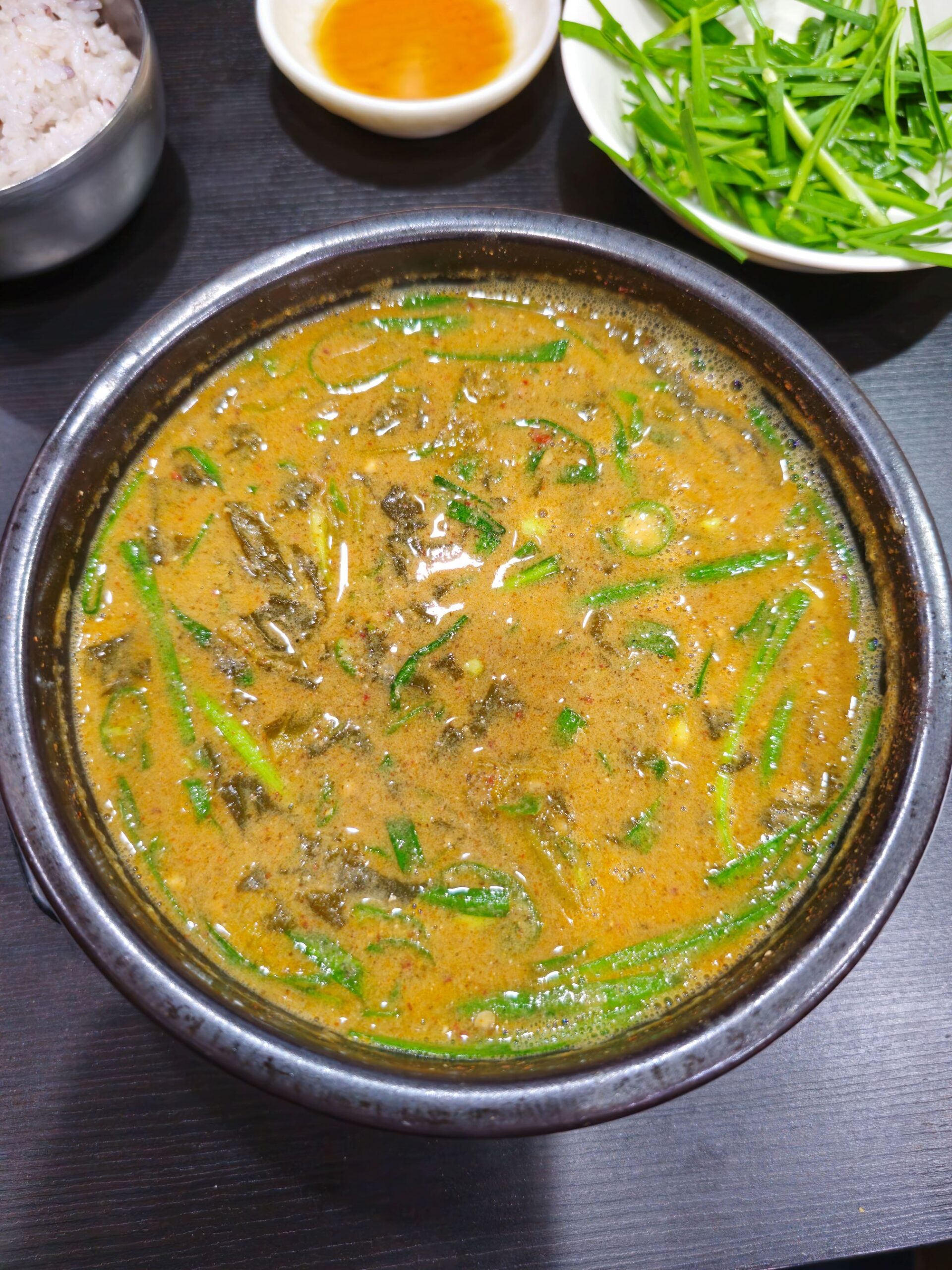Seoul is a city where everything changes fast — new cafés open every week, trendy restaurants rise and fade within a season. Yet, in the middle of this constant evolution, there are a few rare places that hold onto the taste of tradition. Gwanghallu Namwon Chueotang (Main Branch) in Imun-dong, Dongdaemun-gu is one of them. This humble eatery may not catch your eye at first glance, but step inside, and you’ll discover why so many locals — from nearby university students to longtime residents — consider it a beloved institution for comfort food.
The restaurant specializes in one thing done right: Namwon-style chueotang, a rich, thick loach soup that has long been part of Korea’s culinary heritage. It’s the kind of dish that speaks of patience and care — a soup that takes time, simmered slowly to draw out deep flavors from the smallest, humblest ingredients.
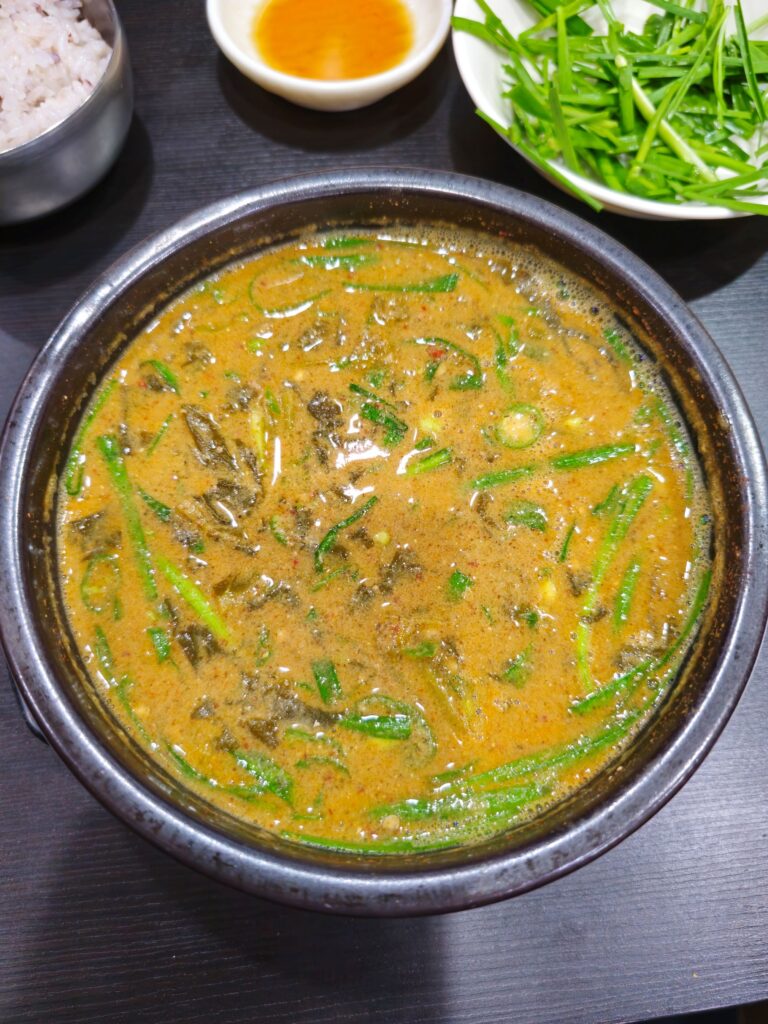
What Is Chueotang?
Chueotang (추어탕) is one of Korea’s oldest traditional soups, made from freshwater mudfish (loach), boiled until tender and then ground into a hearty broth. Its origin traces back to Namwon, a small city in North Jeolla Province that’s also famous for its classical poetry, gentle countryside, and the romantic legend of Chunhyang.
Namwon-style chueotang stands apart from lighter regional versions. It’s dense, flavorful, and almost creamy, thanks to the addition of soybean paste (doenjang) and perilla seed powder (deulkkae garu). These two ingredients transform the broth into something deeply aromatic and slightly nutty — the kind of flavor that comforts you from the inside out. It’s also considered a stamina food, believed to boost energy and circulation, which is why it’s especially popular in the cooler months of autumn and winter.
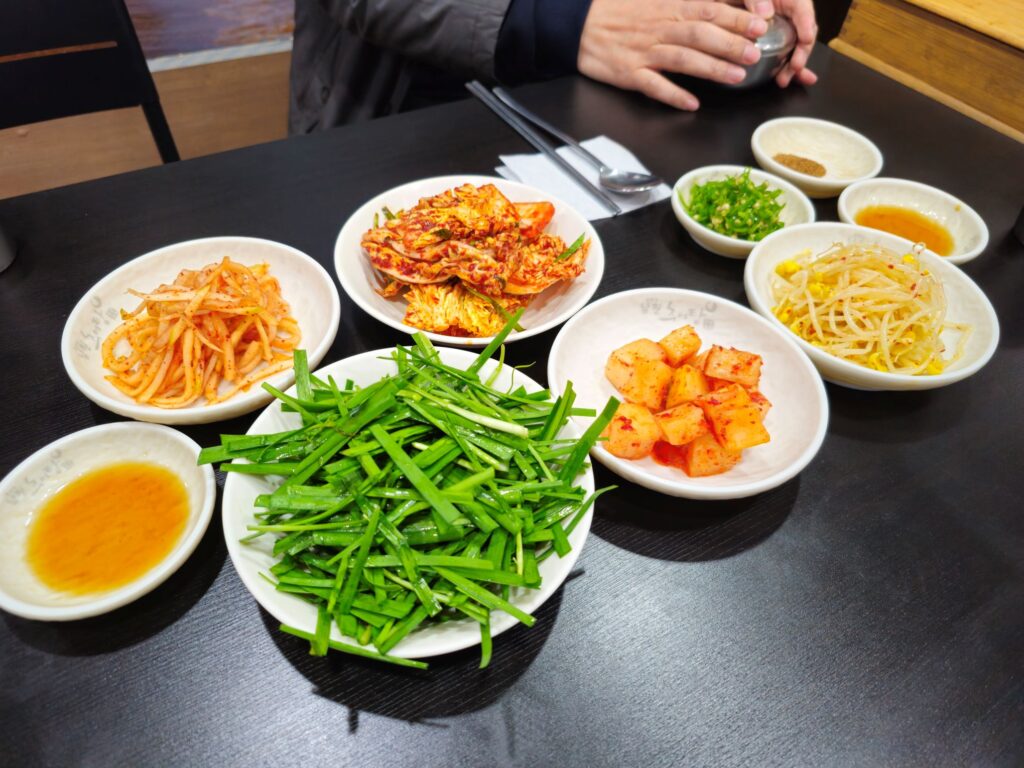
A Hidden Landmark in Imun-dong
You’ll find Gwanghallu Namwon Chueotang on Imun-ro, a quiet street surrounded by universities, small shops, and residential apartments. From the outside, it looks modest: a low, old-style building with a simple signboard. Yet the moment you step in, you’re greeted by the unmistakable scent of something simmering — a blend of garlic, broth, and roasted perilla that instantly makes you feel at home.
The interior is practical but cozy. Wooden tables line the floor, and the air hums with the sound of stone pots boiling and spoons clinking. It’s not fancy — there are no elaborate decorations or trendy lighting — but it has a warmth that feels genuine. You’ll often find groups of students stopping by for a quick but hearty lunch, office workers refueling between meetings, and elderly regulars who’ve been coming here for years.
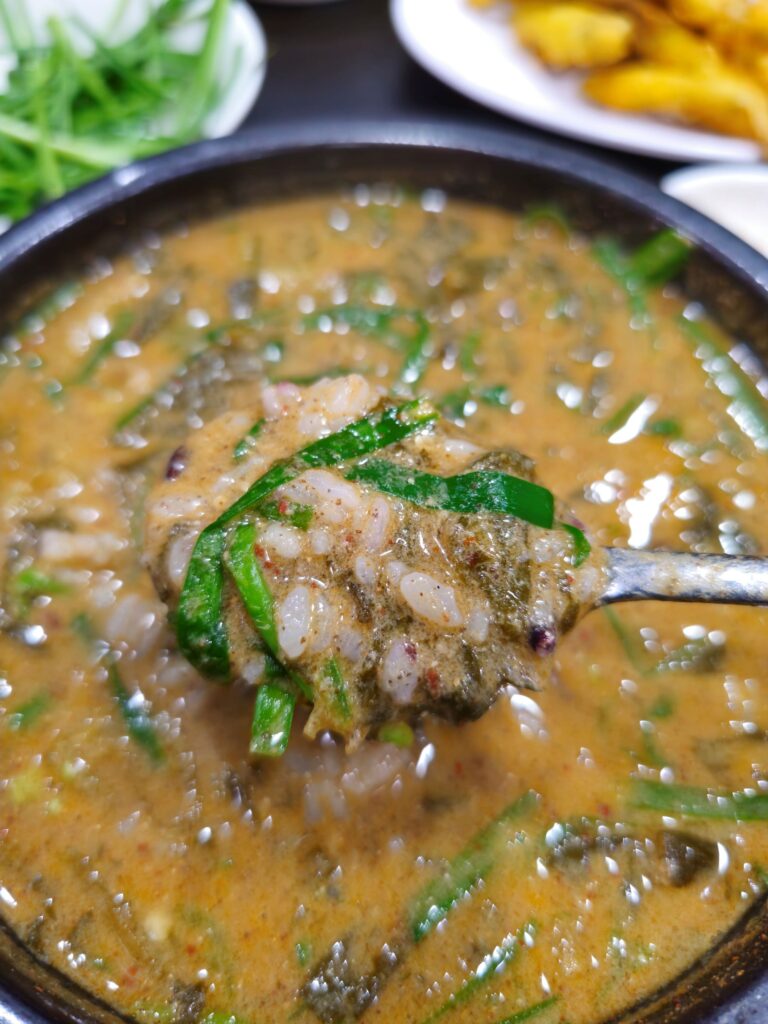
The Signature Dish: Namwon-Style Chueotang
The highlight of the menu, of course, is the Namwon-style chueotang. It arrives in a black stone pot, bubbling so vigorously that the aroma hits you before you even pick up your spoon. The broth is rich and thick, its surface glistening slightly with perilla oil. The flavor is deep and layered — the earthiness of the loach base, the smooth nutty undertones of perilla, and the faint saltiness of fermented soybean all working in harmony.
There are two styles to choose from. The mashed version (갈아서 만든 추어탕) blends the loach fully into the broth for a smooth, velvety consistency that’s easy to enjoy even for first-timers. The whole-fish version (통추어탕), on the other hand, leaves the fish intact, giving a slightly stronger, more rustic flavor and texture — perfect for those who want the traditional countryside experience.
Each bowl is served with a side of rice, a small dish of chili paste for adjusting heat, and several kinds of banchan (side dishes) — including freshly made kimchi, pickled radish, and seasoned greens. Garnishes such as bean sprouts, scallions, and water dropwort (minari) add freshness and crunch, balancing the richness of the soup.
If you prefer a bolder flavor, mix in a spoonful of chili paste or flakes midway through your meal. The spice blends beautifully with the perilla base, creating an even deeper, more satisfying taste.
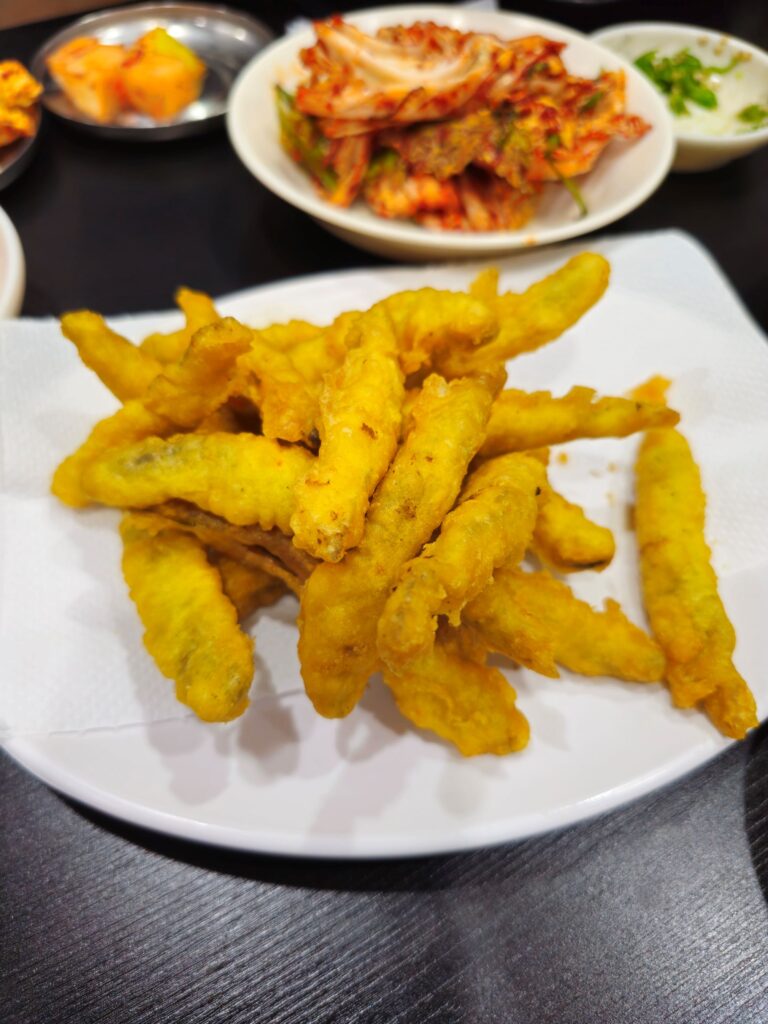
Side Dishes and Other Favorites
Though chueotang is the undisputed star, the restaurant also offers several classic Korean side dishes that round out the experience. Loach fritters (추어튀김) provide a crispy contrast to the soup — the perfect pairing for spicy kimchi or a sip of makgeolli, while galbitang (갈비탕), a clear beef-rib soup, gives a lighter alternative for those who prefer a non-fish option.
All dishes are prepared in a way that feels home-cooked rather than commercial. Even the kimchi has a distinctly balanced flavor — neither too sour nor too salty — which shows how much the restaurant values the small details.
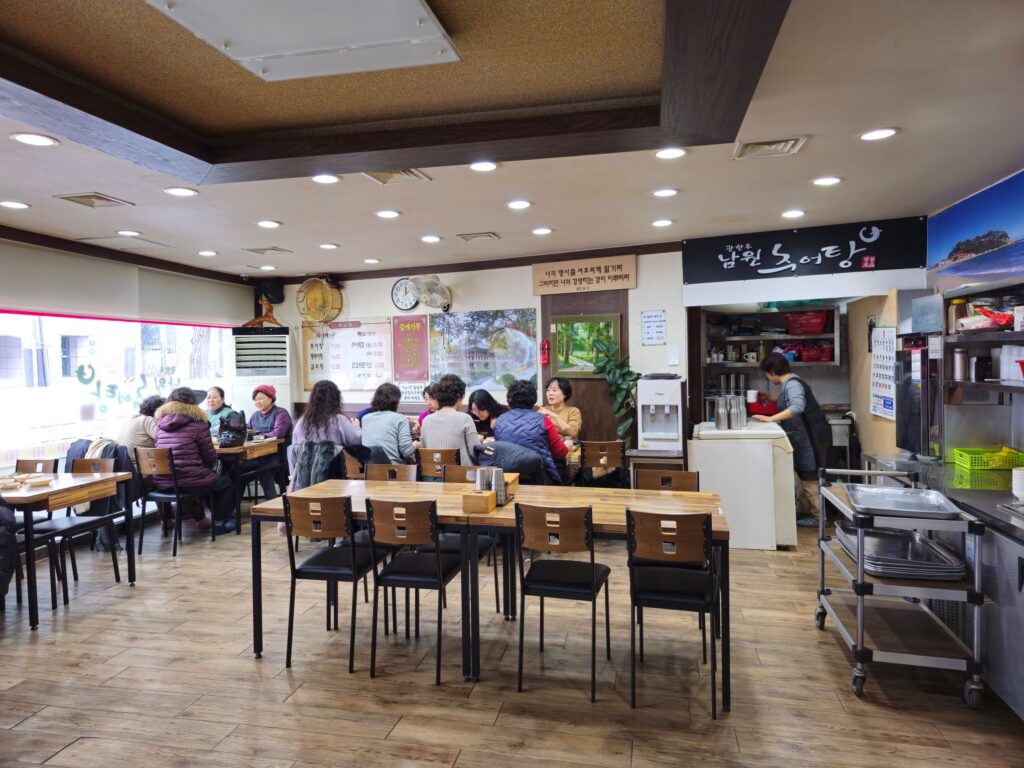
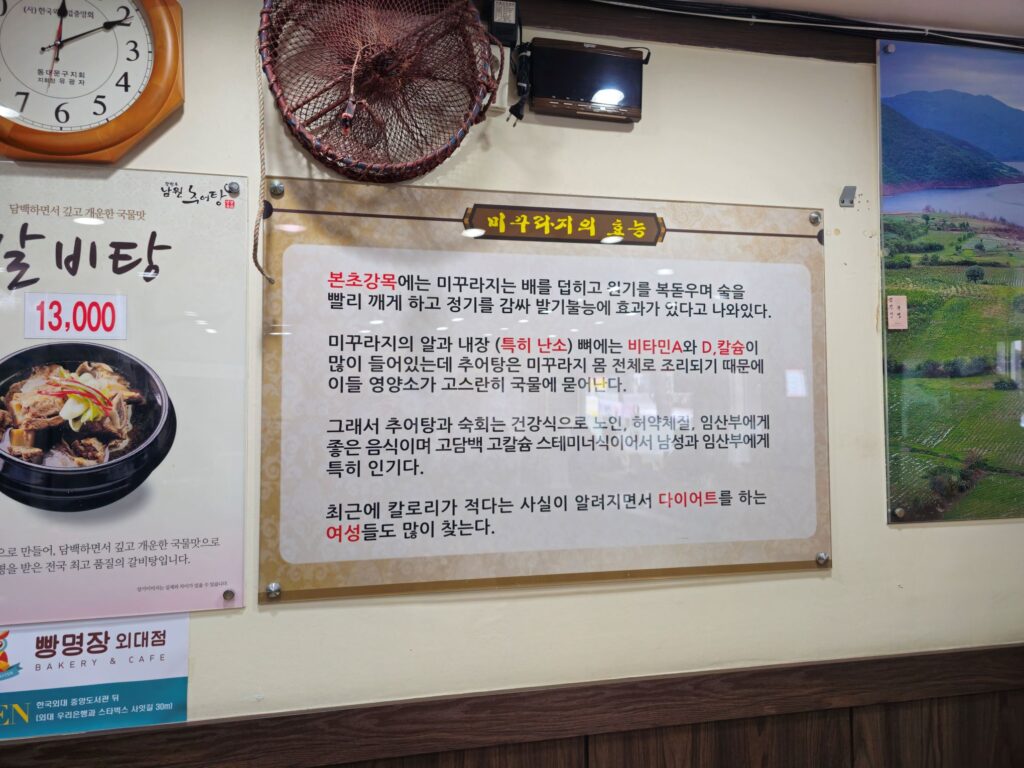
My Visit: A Bowl That Feels Like Home
When I visited Gwanghallu Namwon Chueotang on a cool autumn afternoon, the restaurant was already busy with late lunch customers. I ordered the mashed-style chueotang, curious to see if it lived up to its reputation. Within minutes, the stone pot arrived at my table, still bubbling furiously. The first spoonful was unforgettable — nutty, savory, and full-bodied, yet smooth enough to go down easily. The perilla flavor was distinct but never overpowering, leaving a soft, lingering aroma.
Halfway through, I added a small spoon of chili paste and stirred. The broth turned a deeper red, and the flavor opened up beautifully — the spice enhancing rather than masking the perilla. Each bite of rice soaked in the soup felt deeply satisfying, and the fresh kimchi cut through the richness perfectly. By the end, I was full but content, the kind of fullness that feels comforting rather than heavy.
It’s hard to describe, but the meal carried something more than taste — it had emotion. It reminded me of meals shared in small countryside kitchens, where food isn’t about presentation but about nourishment, family, and familiarity.
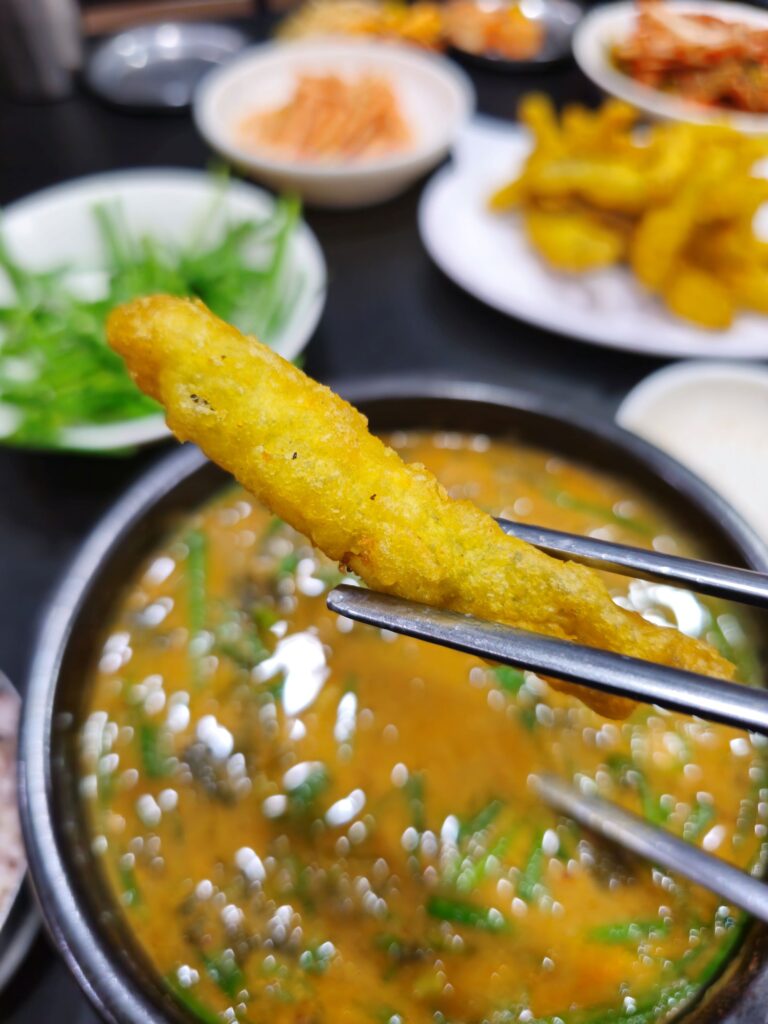
Tips for Your Visit
- Come early or late: The restaurant gets crowded around lunch and dinner hours. If you visit between 2 PM and 5 PM, you’ll enjoy a quieter experience.
- Taste before seasoning: The broth’s natural flavor is rich enough on its own — try it plain first.
- Order a side to share: The suyuk (boiled pork) or loach fritters make excellent companions to the soup.
- Bring cash or card: Both are accepted, but payment is made at the front counter.
- Combine with a walk: After your meal, stroll around Kyung Hee University’s campus nearby — especially beautiful in autumn.
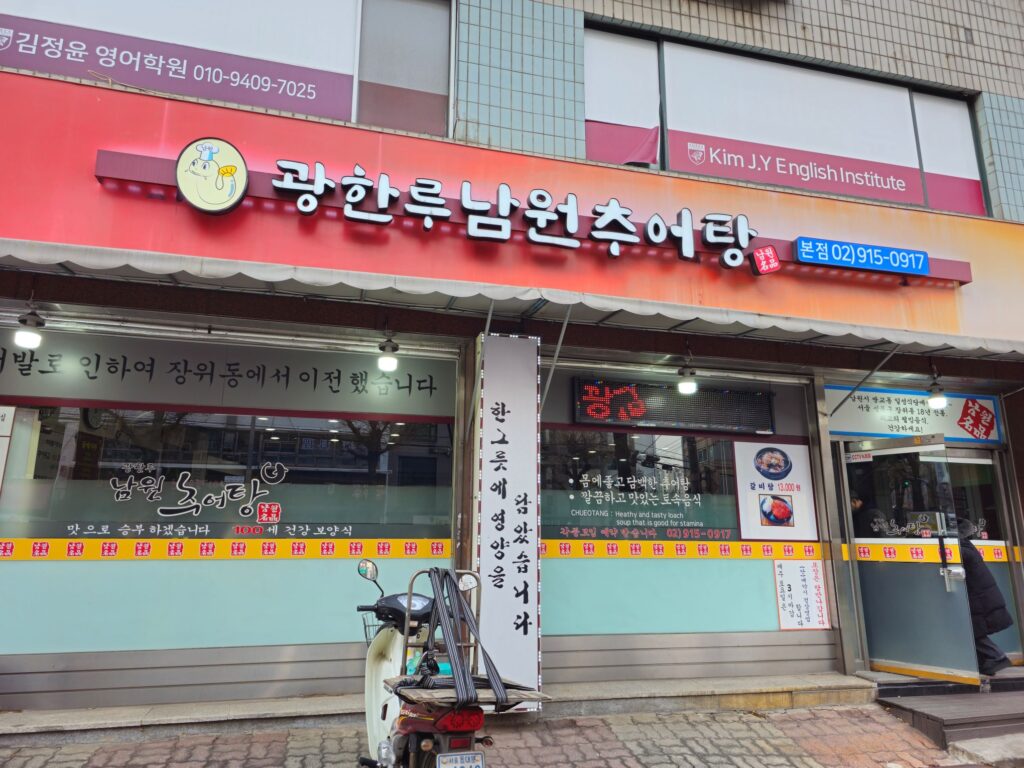
Why Locals Keep Coming Back
There’s something quietly reassuring about Gwanghallu Namwon Chueotang. It doesn’t advertise much, doesn’t chase food trends, and doesn’t change its menu. Yet it’s always full. Locals return because they know exactly what they’ll get — a hot, hearty bowl made the same way every time. In a city that’s always reinventing itself, this kind of consistency feels almost luxurious.
It’s a place where you can slow down, eat slowly, and feel grounded — even for a brief lunch hour. The flavors of Namwon, carried here to the streets of Seoul, remind diners that food can still be both humble and extraordinary.
Key Information
- Name: Gwanghallu Namwon Chueotang (Main Branch)
- Address: 1F, 75 Imun-ro, Dongdaemun-gu, Seoul (Imun-dong 335-5)
- Phone: 02-960-6660 / 02-915-0917
- Hours: 10:00 AM – 9:30 PM
- Main Menu & Prices:
- Chueotang ₩11,000
- Loach Fritters ₩30,000
- Galbitang ₩13,000
- Nearest Subway: Hankuk University of Foreign Studies (Line 1), Exit 4 – 10 min walk
Dongdaemun Design Plaza (DDP): A Landmark made by Zaha Hadid
Gwanghuimun Gate: Discovering Seoul’s Hidden City Wall Heritage

